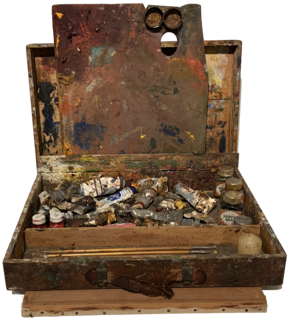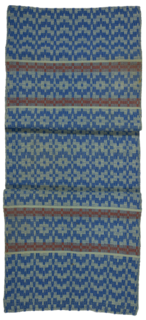
Extinct in the Wild
Courtney Egan: C.A.R.S. Online
Curatorial Statement
December 2020
Extinct in the Wild is my most recent video projection, made during this pandemic period, although I started recording the Angel’s Trumpet’s blooms years ago. I was, and still am, fascinated with its bloom’s color shifts. As I worked, I reflected on my urgent feeling that humans must radically adjust our relationship with the vegetal and non-human worlds. This feeling, and the concept of humans and plants as collaborators in the cultivation of the planet, guided my selection of work from the Allicar Museum collection.
Humans have long been figuring out plants, learning and benefiting from them. The story of the Angel’s Trumpet demonstrates the different paths humans have taken in the search for plant-based knowledge. In South America, where Angel’s Trumpet is native, it has been given many, many names: . . . Almizclillo, baumdatura, baumstechapfel, borrachera, (Spanish, “inebriator”), campachu, campanilla, chamico, cimora . . . floripondio . . . guarguar, hierba de los compañones, huántac (Zaparo-Quechua), huanto, huánto (Quijo), huántuc (Quechua), huarhuar, isshiona (Zaporo) . . . maícoma, mai ko, mai ko’ mo, mataperro (Spanish, “dog killer”), misha huarhuar, misha rastrera blanca, qotu (Quechua), saharo, tecomaxochitl (Nahuatl), toé, tree stramonium, trombeteiro (Brazil) . . . . Indigenous peoples have cultivated Angel’s Trumpet for medicinal and shamanic purposes for thousands of years.
In the 18th century, European explorers/botanists who “discovered” the plant were interested in its ornamental appeal and spread it around the planet. After arguing over its taxonomy for a century, a German botanist in 1805 finally gave the flower its own genus “Brugmansia,” honorifically naming it after a Dutch naturalist of the previous century, Sebald Brugmans, and Brugmansia is considered it’s scientific name.
The International Union for Conservation of Nature (IUCN) - who tells us when species go extinct - designates Brugmansia as EW, “Extinct in the Wild.” This means that the genus propagates only through human cultivation, and no longer reseeds in the wild. In essence, humans have supplanted the need for this plant to reproduce on its own. The beauty of this plant-human evolutionary partnership makes me think about what defines our current relationship with nature, and what our future will look like. Are we disrupting our ancient tandem relationship with our earthly cohort, the plant world?




